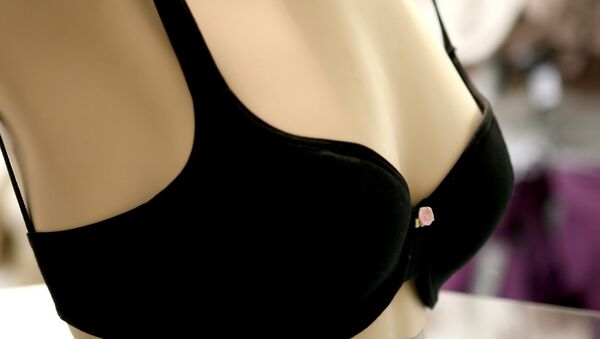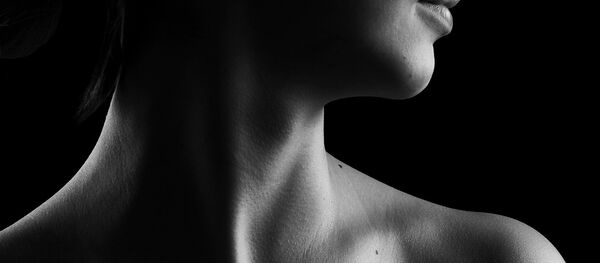No Bra, No Problem
It all started when 17-year-old American, Kaitlyn Juvik, went to school one day without wearing a bra underneath her black top. Juvik’s vice principal called her and asked her why she wasn’t wearing a bra. Juvik said that she felt embarrassed and almost violated by the comments and later she wrote about it on her Snapchat which generated a lot of support for her.
Female students stage bra-less protest after girl… https://t.co/Y7lvSJnKbL #HelenaHighSchool #KaitlynJuvik #KRTV pic.twitter.com/uHE9Sc86G1
— We Resist (@ProtestWatch) June 7, 2016
A few days later, many girls who supported Kaitlyn came to school without wearing bras. According to media reports, Juvik said that they didn’t want to harm anybody. They didn’t want to make the administration upset. It was for them [girls without bras].
“It was about gender equality and teaching people not to sexualize women’s bodies. We’re always asked to do things to make guys more comfortable. If my boobs make you uncomfortable, then why are you looking at me in that way?” Juvik said.
Her Instagram page “Warrior without a bra,” attracted tens of thousands of subscribers within just a couple of weeks.
There are now more than 7,000 photos with the hashtag #NoBraNoProblem, showing girls who have stood with Kaitlyn by posting photos of themselves without a bra.
Twitter: @bodhichittakusa
— No Bra No Problem (@NoBraNoProblem) July 23, 2016
"I want to be able to feel confident in my skin without being shamed for it." #braless pic.twitter.com/4C6ZO1J7xC
The movement has generated some support as well among Russians. Elena Rydkina took a photo of herself without a bra and wrote on her social media page: “If you have small breasts, which does not require support of bras at all, than it is an absolutely useless thing and only interferes with life. Freedom to breasts!”
Some other women commented under their pictures saying that, “When it is hot, I want to wear a T-shirt without a bra, but with my size it is difficult.”
Back in 1968 a movement which was later called “bra burning” started across the United States. Radical women protested against the “Miss America” beauty pageant by throwing away and burning their bras, false eyelashes and other household items for women. The protestors called these items humiliating.
Some women even went as far as calling the bra an instrument of torture. They also tried to emphasize the connection of wearing a bra and breast diseases [due to impaired blood flow].
In Russia there are various reasons why women wear a bra. Some of these reasons are:
“I cannot afford to go without a bra to work. There are a lot of men there. When I come in trousers, everyone is looking at my legs and what is above it. It is terrible to imagine what would happen if I go without a bra,” Anna 31.
“When I abruptly lost 20 kilos, my breasts became ugly: limp, lost shape, turned into two empty pouches with stretch marks. I always wear a bra, even in bed but I dream that one day I can go without it,” Ekaterina 28.
“I'm kind of naked without a bra. Without it I cannot go out on the street. But I love the moment at the end of the day when I come home and unbutton it. Of course it is some kind of inner clamp. Probably some inner shame that I am a woman,” Yulya, 26.
Breasts in Art
In art naked breasts symbolizes freedom [for example a famous painting by Eugène Delacroix's Liberty Leading the People), sacred motherhood [the image of Madonna, nursing a baby] and femininity [image of Venus in paintings of Botticelli, Titian and many others].
Despite the fact that objectification of female body still exists today, what female breasts symbolize today is different for everyone. For some, seeing a woman without a bra is provocation, for others it is seen as an invite to flirt, psychoanalyst Dmitry Olshansky said.
According to the psychoanalyst, the movement against bras is “like fighting windmills,” it deprives the individual of self-expression. How the person feels in her own body and what her self-worth is and how she feels about her gender identity.
Kaitlyn Juvik on her part received a lot of public attention with her gesture. She said that she had people from as far as UK, France and India contact her. There have been a lot of awful comments sent her way as well, with some calling her a “whore” and “attention seeker”.
Despite the hate, Juvik said that she is thankful that the word has gotten out because it shows the double standards that women and girls have to face on daily basis.
“This is about ending body shaming. It started with me, but it’s not about me. It’s about women everywhere being able to be comfortable in their own bodies,” Juvik told media.



